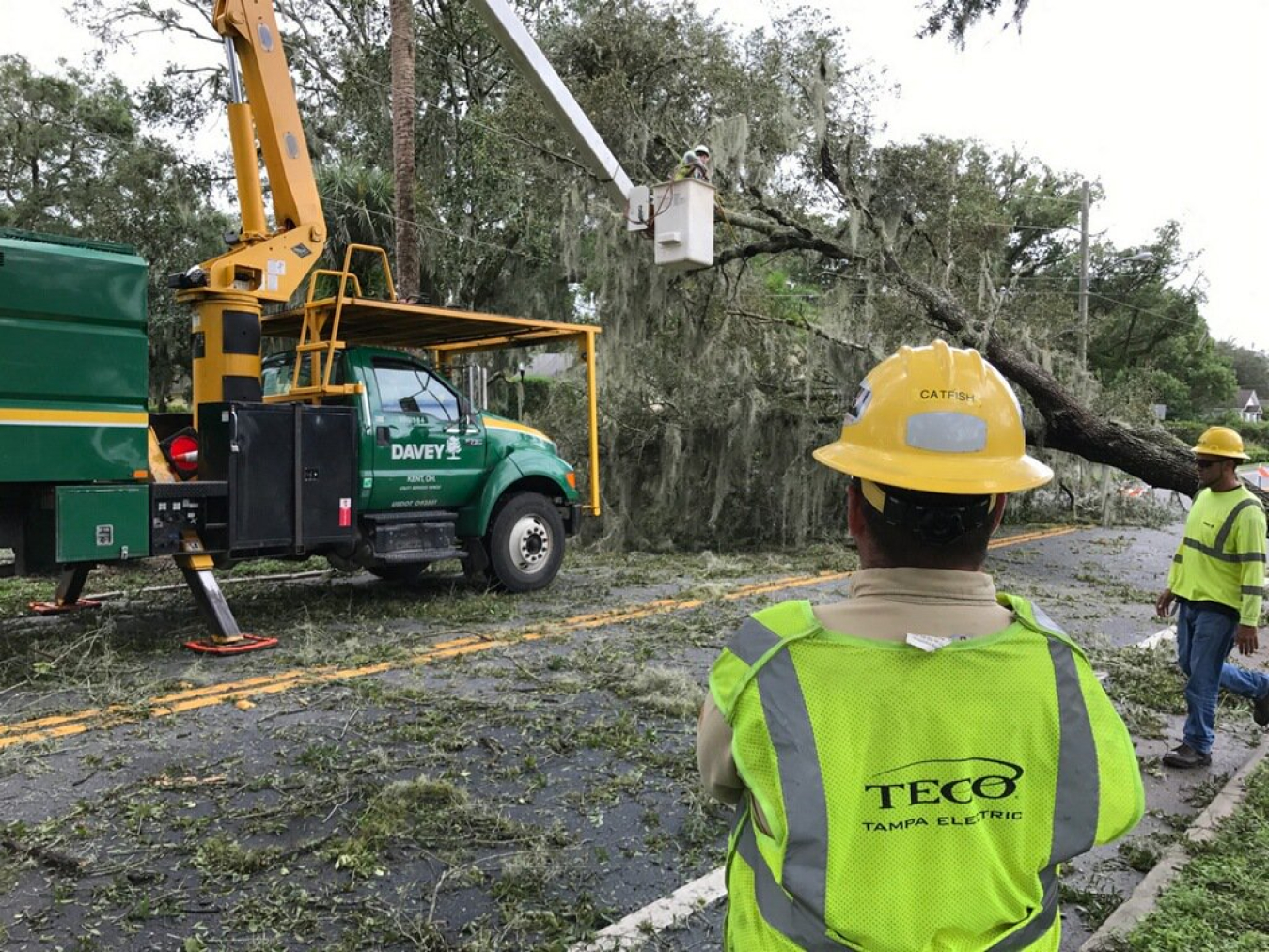The Department of Energy came together with public and private sector partners to respond and rebuild in the wake of Hurricane Irma.
September 13, 2017In recent weeks, our country has seen damage from two hurricanes of record proportions.
Harvey dropped so much water in Texas and Louisiana that the city of Houston sank two centimeters. Irma, an enormous and powerful storm following quickly on Harvey’s heels, has devastated neighborhoods from the Caribbean to Georgia. Each of these storms in very different ways presented monstrous challenges to the electric utilities and oil and gas suppliers that keep our country’s lights on and power flowing.

Today, while many are still hurting, a greater number are beginning to see relief. This is thanks to the combined efforts of more than 60,000 workers from nearly 250 investor-owned electric companies, public power utilities, and electric cooperatives from across the United States. It is also thanks to the hundreds of state, local and federal employees assisting these workers to get the lights on and make fuel available.
Full restoration, especially for some of the hardest-hit areas, is going to take time, but real progress is being made. Power has now been restored to 64% of the affected customers. Florida Power and Light, for example, is restoring power at a pace roughly four times faster than it did after Wilma in 2005. One of the reasons this is possible is because of the unparalleled mutual assistance that electric utilities across the country are providing one another.
Crews have come from all corners of the U.S. – from Washington State and New Mexico and Colorado, from Michigan and Maine and Maryland – to aid in the restoration. In some cases, prepositioned restoration crews were even able to begin restoration efforts between the rain bands of the storm. These crews are working around the clock to restore power as quickly and safely as they can.
While the utilities and oil and gas companies have been busy on the ground, government agencies have been equally busy behind the scenes clearing the way for the recovery. The level of coordination and cooperation among federal, state and local governments and power companies has been remarkable.

Secretary Rick Perry and Acting Secretary Elaine Duke have been engaged with industry leaders and governors of the affected states on a daily basis to make sure that all that can be done is being done to aid in the restoration. And members of the DOE emergency response team — an amazingly dedicated group of public servants — have been in the field and manning the phones to support the fastest, and safest, possible restoration.
We will all stay at this until all the lights are back on.
Resources
-
Situation reports issued for Hurricanes Nate, Maria, Irma and Harvey
-
 Energy Department and Partners Prepare for Irma and Aid in Harvey Restoration
Energy Department and Partners Prepare for Irma and Aid in Harvey Restoration -
Do you live in an area impacted by Hurricane Harvey and have experienced price gauging when buying fuel? File a complaint using these resources.
-
The Department of Energy offers resources and guidance that can help you, when possible, recover power, fuel, and natural gas more quickly.
-
Projects to improve the resilience of the Nation's critical energy infrastructure, including the electric grid and oil and natural gas infrastructure.
Devon Streit

Deputy Assistant Secretary, Infrastructure Security and Energy Restoration
Devon Streit, a career member of the Senior Executive Service, serves as the Deputy Assistant Secretary for Infrastructure Security and Energy Restoration in the U.S. Department of Energy's (DOE) Office of Cybersecurity, Energy Security, and Emergency Response (CESER). The Infrastructure Security and Energy Restoration (ISER) Division works with other U.S. government agencies, state and local partners, and industry to enhance the security and resilience of critical energy infrastructure, and facilitate the reconstruction and recovery of damaged or disrupted energy systems.
Ms. Streit most recently served as a Senior Advisor in the Office of the Secretary of Energy with a portfolio that spanned international science projects including the multi-national ITER fusion energy facility being built in Cadarache, France; DOE National Laboratory issues, technology transfer and commercialization, and project management.
Prior to this, she was the DOE Associate Director of Science for Laboratory Policy and Evaluation. As such, she was responsible for developing uniform Office of Science-specific policies related to the management, operation, and stewardship of its ten National Laboratories. These included the competition or extension of the laboratory management and operating (M&O) contracts; running fair and rigorous annual laboratory planning and performance appraisal processes; and overseeing policies and programs related to Work for Others (WFO), Laboratory Directed Research and Development (LDRD) and Technology Transfer (TT).
Within the Office of Science, Ms. Streit also held positions as Acting Deputy Chief Operating Officer and as a Senior Advisor to the Director. Ms. Streit has spent much of her professional career managing, advising on, and supporting the nation’s science and technology enterprise. She came to the Department in 2001 from a career that spanned State government (Ohio), DOE National Laboratories (Sandia), not-for-profit institutions, and for-profit companies, in each case focused on promoting scientific research and addressing the policy issues that affect the use and commercialization of science and technology. Her areas of expertise include technology road-mapping—a form of strategic planning for research and development (R&D) organizations—strategic planning for scientific organizations, focus group and scientific meeting facilitation, performance measurement, and the qualities of research institutions that foster excellent research.
Ms. Streit received her B.A. in Neurobiology from Vassar College in 1985 and her M.A. in Science Policy from George Washington University in 1992.

